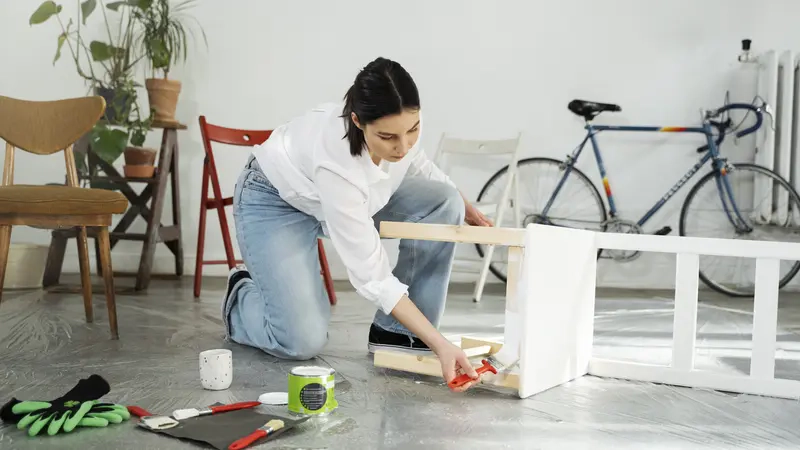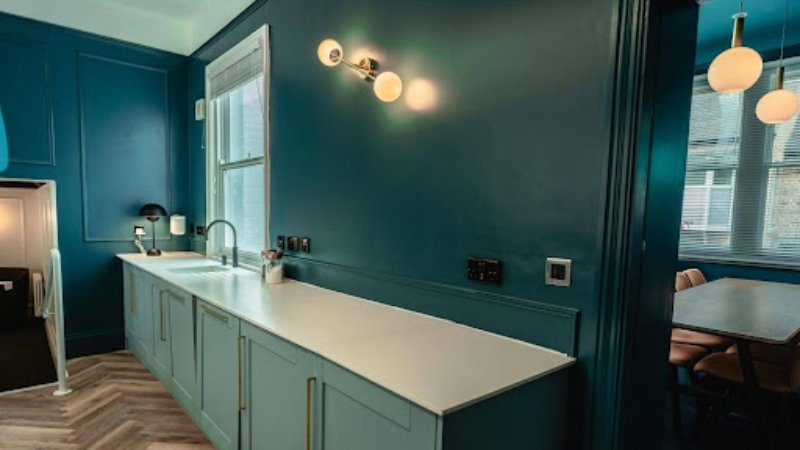Renovations at home might bring energy and enthusiasm into a living area, but they also bring dust, mess, as well as the risk of damage for valuable belongings. Lacking foresight, even small upgrades might cause scratched furniture, damaged electronics, or broken delicate belongings. Preserving home belongings during renovations makes the process go smoothly and avoid costly replacements.
Planning in advance makes all the difference. Before work begins, determine what goes into stowing away, what gets blanket-covered, and what can remain in place safely. By clearing out, you not only give the contractors space but also reduce the amount of contents vulnerable. The use of protection covers, getting your possessions into safe storage, and labeling boxes clearly all promote order. Renovations disrupt the routine, but by planning carefully, your possessions remain safe and good to use once the work is completed.
Why Protection Matters
Protecting belongings during renovations is just as important as planning the project itself. When dust, debris, and heavy tools are involved, accidents can happen quickly.
Furniture, electronics, and even vehicles can be at risk if not handled properly. Taking simple steps early helps reduce stress and keeps items safe until the work is finished. For larger belongings, like cars or motorcycles, using options such as car storage in Westover Fayetteville provides extra peace of mind while work is ongoing. This ensures they remain secure and protected from damage caused by construction materials or shifting equipment.
Myth vs reality: Many believe renovations only affect the areas being worked on. In reality, dust, vibrations, and movement can spread throughout the home. Items in nearby rooms are just as vulnerable as those in the direct renovation space, making protection a whole-home effort.
By preparing carefully, homeowners can avoid costly repairs or replacements. Covering surfaces, moving items to safe storage, and using protective barriers all contribute to keeping the household intact. The time spent on protection is minimal compared to the effort required to fix or replace damaged belongings later.
Declutter Before Work Starts
A unique way to prepare for renovations is to declutter before any work begins. Removing items that are no longer needed reduces the number of things at risk and makes organizing much easier. Start by sorting belongings into categories: keep, donate, or discard. Packing only what truly matters not only protects valuables but also simplifies the process when renovations are complete. Homeowners often find that decluttering creates more space for contractors to work, allowing projects to move faster. It also gives families a fresh start once the dust settles. By viewing renovations as both an upgrade and an opportunity to reset, households gain long-term benefits that go beyond the construction itself. This approach turns preparation into a chance to improve daily living while safeguarding important belongings.
Safe Storage Options
One common question is what are the best storage options during home renovations? The safest solutions depend on the size and type of items. For small belongings like décor, books, and clothing, sturdy boxes and plastic bins work well. Larger furniture pieces may need to be moved to a secure self-storage unit or placed in a different room away from the work area. For high-value items, climate-controlled storage ensures protection against dust, moisture, and temperature changes.
Another frequent question is how can I keep household items safe without renting storage? In many cases, items can be covered with plastic sheets, tarps, or blankets to shield them from dust and scratches. Moving items to garages, basements, or unused rooms also provides temporary protection. However, homeowners should make sure these areas are dry and secure.
A final question often asked is why should I label boxes during renovations? Labeling saves time and prevents confusion when unpacking after the project is complete. It also helps contractors and family members know which boxes should not be moved or opened. A clear labeling system can make the entire renovation process smoother and less stressful.
By choosing the right storage solution and staying organized, homeowners can safeguard their belongings until renovations are complete.
Covering and Shielding Items
Covering and shielding items inside the home is a simple yet effective way to keep them safe during renovations. Protecting furniture, flooring, and décor ensures the work area stays contained while reducing the risk of long-term damage. Try these quick and practical steps to make your space safer.
- Use plastic covers for sofas, chairs, and mattresses
- Lay down floor protectors or drop cloths in work zones
- Wrap fragile décor with bubble wrap or padded blankets
- Cover electronics with dust-resistant fabric or sheets
- Install temporary barriers between work areas and living spaces
Common mistakes to avoid: Many homeowners underestimate how far dust can travel, leaving items in nearby rooms unprotected. Others use flimsy covers that tear easily or fail to secure them tightly. Forgetting to cover floors often leads to scratches, dents, or stains that are costly to repair later.
By investing in quality covers and planning ahead, you can protect household items without adding much effort. These steps keep the home livable during renovations while ensuring belongings remain in excellent condition.
Tips for Fragile Belongings
One Fayetteville family just renovated their kitchen and faced the dilemma of how to protect fragile glassware and family dishes. They first packed items into plain cardboard boxes, which chipped and cracked after a week of work. Realizing the danger, the family talked with a local moving expert and received the recommendation to use bubble wrap, foam separators, and heavy-duty plastic bins. They also stored the best pieces in a mini rental unit until the remodel had completed. This simple substitution saved their fragile belongings and gave them peace of mind throughout the remodel.
Advantages vs. disadvantages: The advantages of covering fragile items are the avoidance of expensive replacements, the maintenance of sentimental possessions, and the minimization of stress when performing a renovation. Adequate packing also provides extra space for safe work by contractors. The disadvantages are the risk of underestimating the amount of vibration, dust, and movement that would result in damaged belongings. Improper preparation may lead to lost or damaged items that cannot easily be replaced.
Experts stress the point fragile possessions require special attention even from regular storing. They must be packed independently, filled with protective padding, and marked explicitly. Storing these boxes into another room of the residential unit or external storages is an additional protective measure. The Fayetteville family case shows it’s possible to complete a remodelling without abandoning cherished possessions. Taking time preparing fragile possessions pays off later.
Final Thoughts
Keeping household items safe during renovations is not just about protecting things—it is about reducing stress and keeping life organized while work is underway. With planning, smart storage, and the right protective measures, families can safeguard their belongings without slowing down the project. Protecting household items during renovations ensures comfort, security, and peace of mind until the home is ready to enjoy again.


